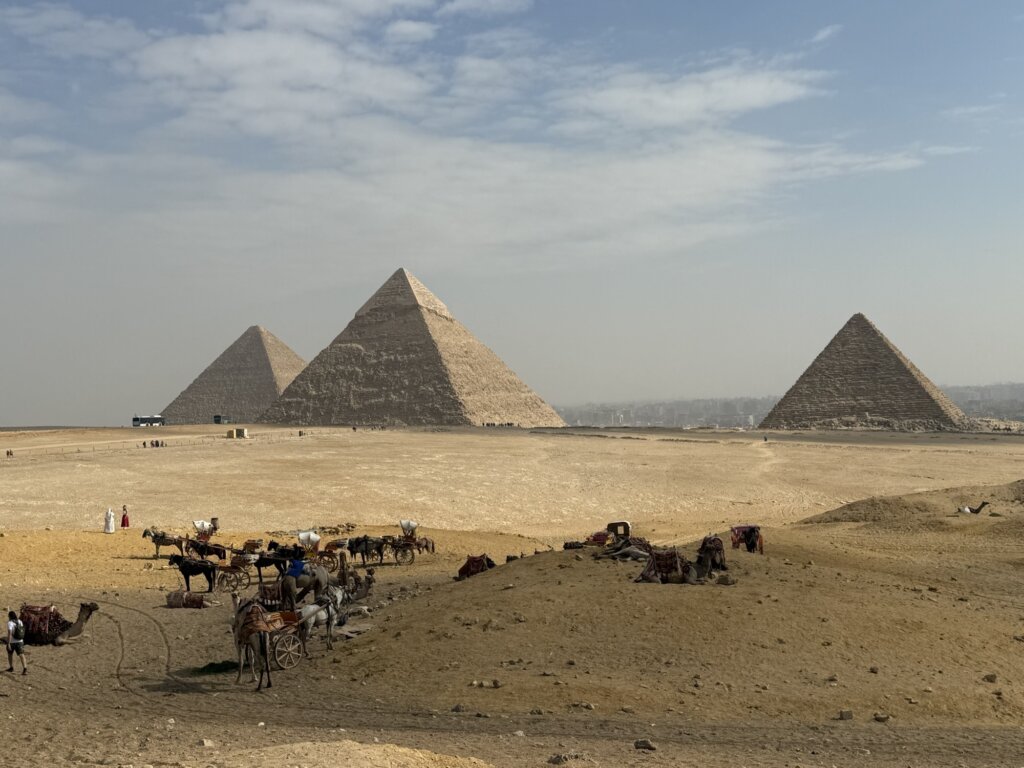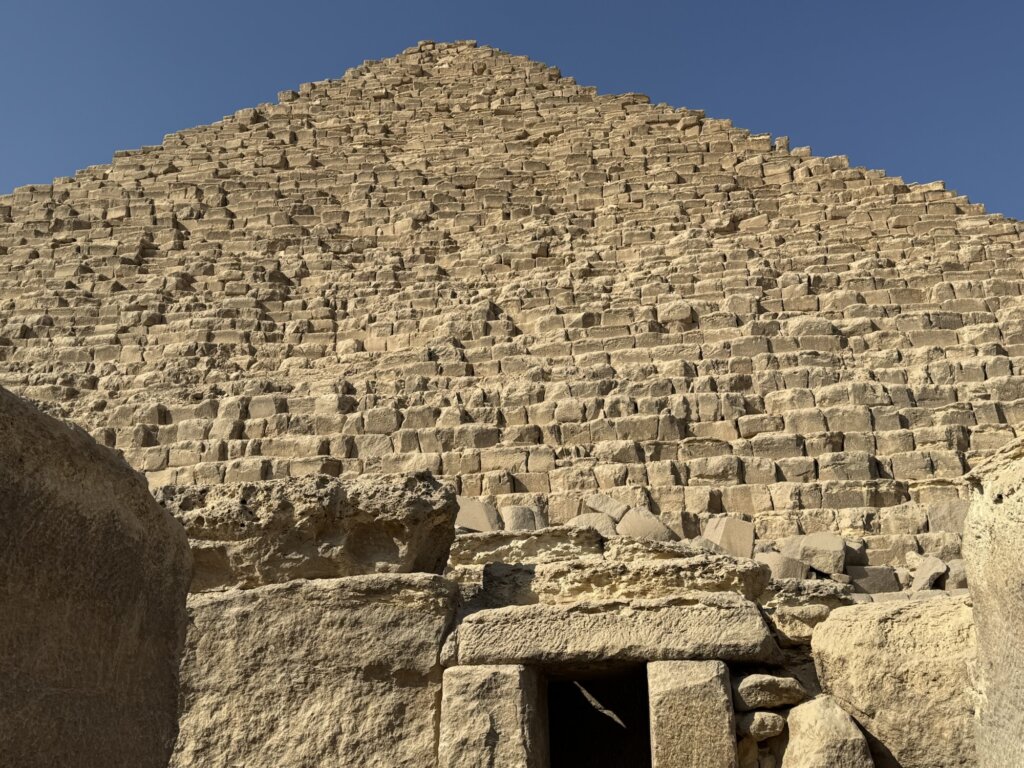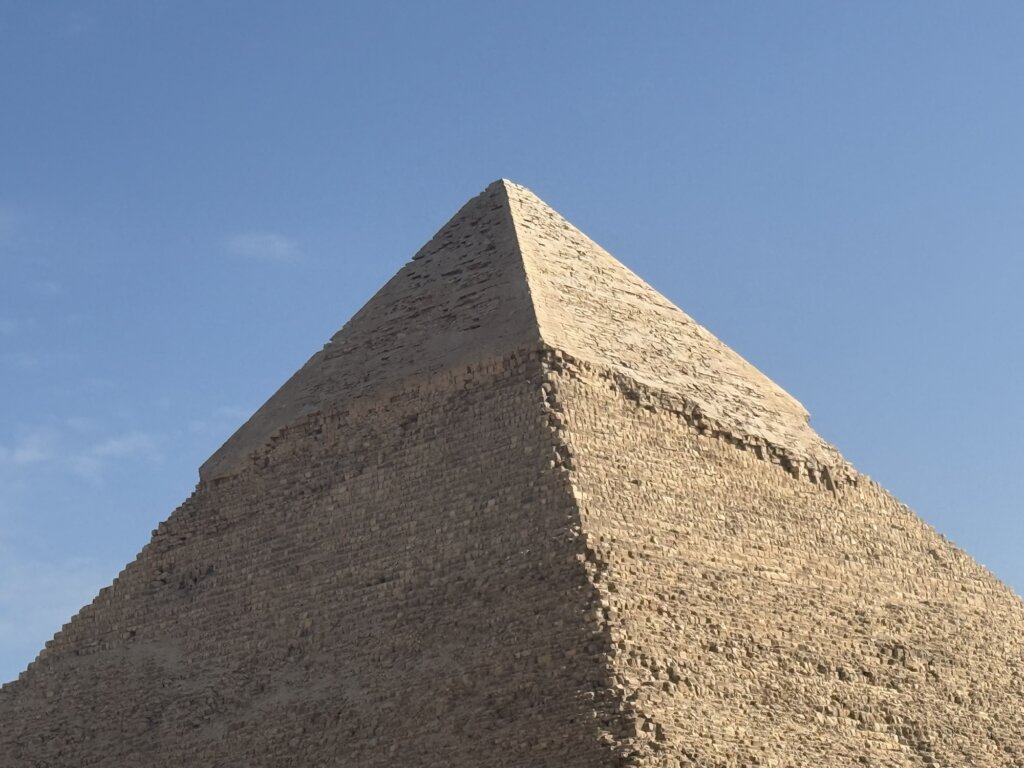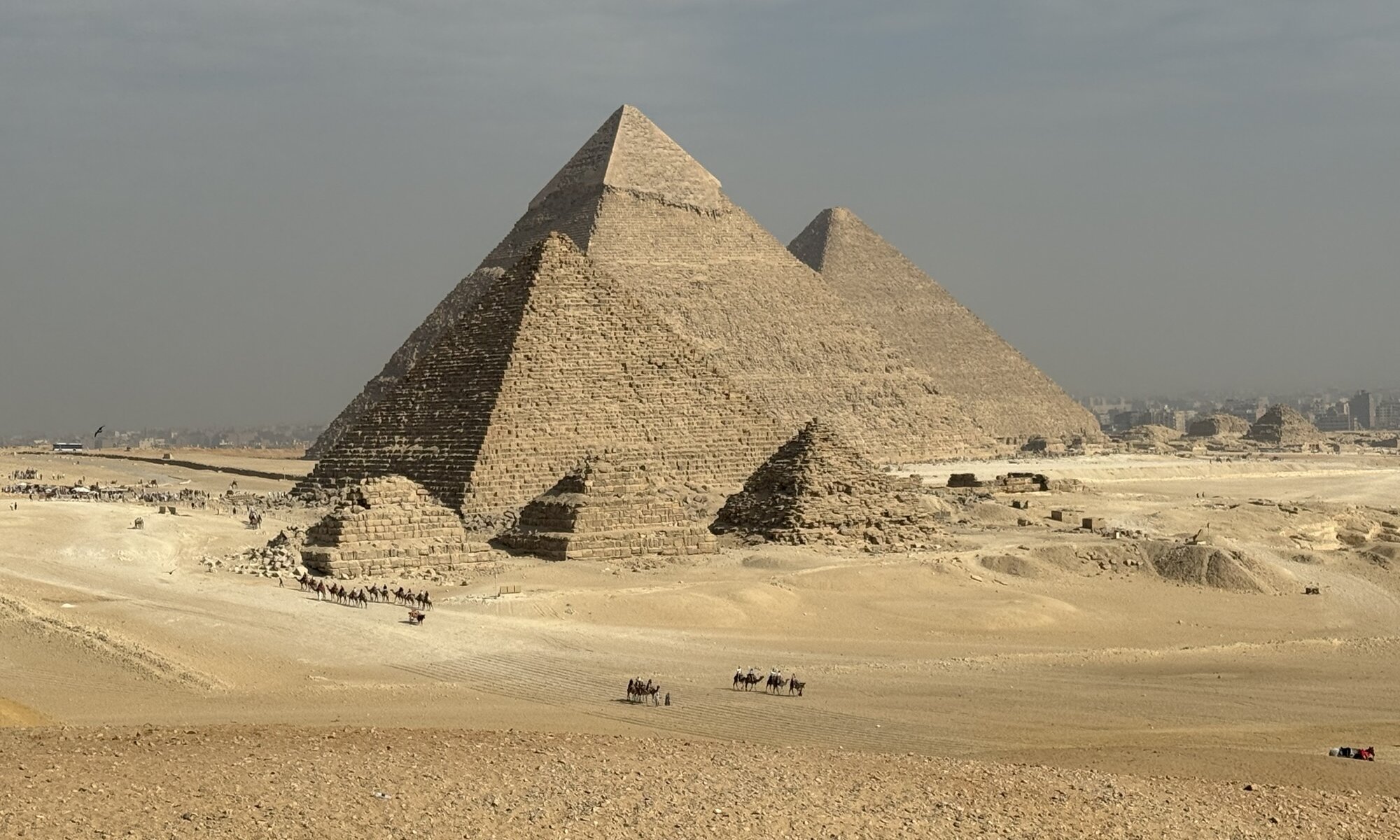The Pyramids of Giza, standing on the edge of the western desert near القاهرة, are the enduring symbols of ancient Egypt’s grandeur. Constructed during the Fourth Dynasty around 2600 to 2500 BC, these monumental tombs were built for Pharaohs Khufu, Khafre, and Menkaure, known in Greek as Cheops, Chephren, and Mykerinos. The Great Pyramid of Khufu was the earliest and largest, originally standing at about 146 metres and built from more than two million limestone blocks. Nearby, the smaller pyramids of Khafre and Menkaure followed, forming a remarkable necropolis that reflected not only royal power but also the Egyptians’ refined mastery of architectural engineering and celestial alignment.



The Great Pyramid of Khufu is the most studied among them, featuring intricate internal chambers including the King’s and Queen’s chambers, as well as a series of ascending passageways designed with extraordinary precision. Around it lay mortuary temples, satellite pyramids for the king’s consorts, and boat pits intended to transport his soul to the afterlife. The structure was originally clad in gleaming white limestone from Tura, which would have made it shimmer under the Egyptian sun, a vivid statement of divine kingship. To this day, debates continue about the exact methods of construction, with theories ranging from straight ramps to complex spiral systems, yet none diminish the profound skill involved.
The Pyramid of Khafre, slightly smaller but built on higher ground, maintains much of its original casing stones at the top, lending it a more complete silhouette. This pyramid was part of an impressive complex that included a causeway, temples, and the iconic limestone Sphinx, which many believe bears Khafre’s likeness. Its interior includes a simple chamber system that contrasts with the complexity of Khufu’s design but embodies the same emphasis on eternal preservation. The Pyramid of Menkaure, the smallest of the trio, is distinguished by its red granite base and a series of subsidiary pyramids, likely for queens or royal daughters, marking the final refinement of الجيزة’s pyramid-building era.



Visitors today can walk among these timeless wonders, exploring the Great Pyramid’s inner corridors, standing before the watchful Sphinx, and marvelling at the scale from the panoramic point over the plateau. The site offers not only a glimpse into Egypt’s archaic world of kingship and spirituality but also an evocative sense of human achievement that has withstood more than four millennia. Whether viewed at sunrise when their shadows stretch across the desert sands or at night during the sound and light show, the pyramids of Cheops, Chephren and Mykerinos remain one of history’s most remarkable encounters between stone and eternity.
The Last of the Seven Wonders
Travelling the world often stirs a fascination with humanity’s most remarkable achievements, and few concepts capture that wonder quite like the Seven Wonders of the Ancient World. These monuments represented the pinnacle of architectural skill, artistic brilliance, and cultural ambition across various ancient civilisations. Of them, only one still stands today – the Pyramids of Giza. The Great Pyramid, in particular, remains a masterpiece of ancient ingenuity and the only wonder that has truly endured the test of time.
The Hanging Gardens of Babylon, said to have been built by King Nebuchadnezzar II near the Euphrates River, are often described as a tiered paradise of lush greenery and cascading water. Their exact location and even their existence remain subjects of debate, as no definitive archaeological evidence has been found. Yet ancient accounts paint an image of a verdant marvel rising from the dry Mesopotamian plains, symbolising mastery over nature itself. This legend, whether rooted in fact or imagination, continues to evoke admiration for the vision of ancient builders.
Farther west stood the Statue of Zeus at Olympia, sculpted by Phidias and regarded as one of the greatest artistic achievements of classical Greece. Crafted from ivory and gold, the colossal figure occupied a temple dedicated to the king of the gods, his presence both majestic and serene. Similarly awe-inspiring was the Temple of Artemis at Ephesus, located in what is now Turkey. Rebuilt several times after destruction, it was famed for its grandeur, intricate columns, and devotion to the goddess of the hunt, representing a fusion of Greek artistry and Eastern architectural influences.
The Lighthouse of Alexandria, the Colossus of Rhodes, and the Mausoleum at Halicarnassus completed the list. The Lighthouse, known as the Pharos, guided ships into the busy harbour of Alexandria with a flame visible for miles – a triumph of engineering and navigation. The Colossus, a gigantic bronze statue of the sun god Helios, once stood proudly at the entrance to Rhodes’ harbour before being toppled by an earthquake. The Mausoleum at Halicarnassus, built as a tomb for King Mausolus, blended Greek, Egyptian, and Lycian styles, inspiring the very word ‚mausoleum’ used today. Together, these wonders reveal not only the artistic and technical brilliance of ancient cultures but also humanity’s enduring drive to build monuments that transcend time and mortality.
Pyramids of Giza
– Pyramid of Cheops / Khufu
– Pyramid of Chephren / Khafre
– Pyramid of Mykerinos / Menkaure
الجيزة
Egypt
Loading map...


